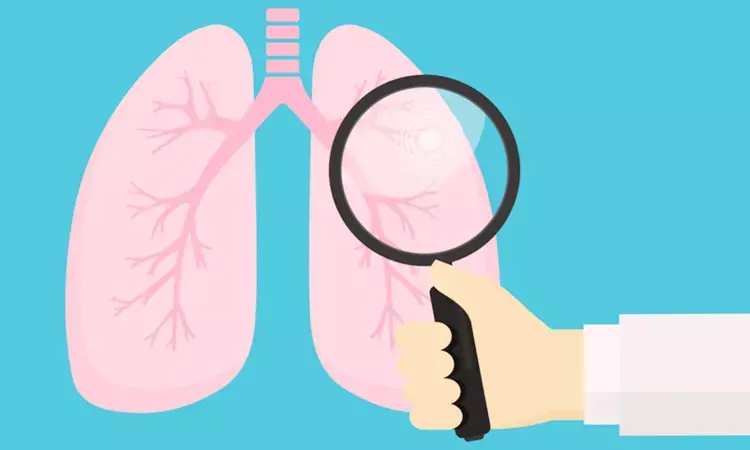- Home
- Medical news & Guidelines
- Anesthesiology
- Cardiology and CTVS
- Critical Care
- Dentistry
- Dermatology
- Diabetes and Endocrinology
- ENT
- Gastroenterology
- Medicine
- Nephrology
- Neurology
- Obstretics-Gynaecology
- Oncology
- Ophthalmology
- Orthopaedics
- Pediatrics-Neonatology
- Psychiatry
- Pulmonology
- Radiology
- Surgery
- Urology
- Laboratory Medicine
- Diet
- Nursing
- Paramedical
- Physiotherapy
- Health news
- Fact Check
- Bone Health Fact Check
- Brain Health Fact Check
- Cancer Related Fact Check
- Child Care Fact Check
- Dental and oral health fact check
- Diabetes and metabolic health fact check
- Diet and Nutrition Fact Check
- Eye and ENT Care Fact Check
- Fitness fact check
- Gut health fact check
- Heart health fact check
- Kidney health fact check
- Medical education fact check
- Men's health fact check
- Respiratory fact check
- Skin and hair care fact check
- Vaccine and Immunization fact check
- Women's health fact check
- AYUSH
- State News
- Andaman and Nicobar Islands
- Andhra Pradesh
- Arunachal Pradesh
- Assam
- Bihar
- Chandigarh
- Chattisgarh
- Dadra and Nagar Haveli
- Daman and Diu
- Delhi
- Goa
- Gujarat
- Haryana
- Himachal Pradesh
- Jammu & Kashmir
- Jharkhand
- Karnataka
- Kerala
- Ladakh
- Lakshadweep
- Madhya Pradesh
- Maharashtra
- Manipur
- Meghalaya
- Mizoram
- Nagaland
- Odisha
- Puducherry
- Punjab
- Rajasthan
- Sikkim
- Tamil Nadu
- Telangana
- Tripura
- Uttar Pradesh
- Uttrakhand
- West Bengal
- Medical Education
- Industry
Low-Dose CT Screening Effective for Early Lung Cancer Detection in High-Risk Populations: SUMMIT Study

UK: A recent study, known as the SUMMIT study, has provided strong evidence supporting the feasibility and effectiveness of large-scale lung cancer screening using low-dose computed tomography (CT) in high-risk populations. The study, published in The Lancet Oncology, highlights the potential of such screening programs to detect lung cancer at an early stage, thereby enabling curative treatments that can significantly improve patient outcomes.
Lung cancer remains the leading cause of cancer-related deaths worldwide, often diagnosed at advanced stages when treatment options are limited. Early detection is crucial in improving survival rates, particularly among individuals with a history of heavy smoking. Conducted between April 2019 and May 2021, the SUMMIT study aimed to evaluate the accuracy and benefits of low-dose CT screening in detecting lung cancer among high-risk individuals.
The study involved 12,773 participants, all of whom were ever-smokers considered at high risk for lung cancer. Baseline low-dose CT screening was performed, and participants with indeterminate findings underwent follow-up imaging at three and six months.
The key findings of the study are as follows:
- 2% of the eligible population was diagnosed with lung cancer after a positive screen, with a number needed to screen of 49 to detect one case.
- The screening protocol showed 97.0% sensitivity and 95.2% specificity for detecting lung cancer at the 12-month follow-up.
- The negative predictive value was 99.9%, highlighting the test’s reliability in ruling out lung cancer.
- 79.3% of screen-detected lung cancers were diagnosed at early stages (I or II), allowing for potentially curative treatments.
- The false-positive rate was 4.8%, emphasizing the need to balance sensitivity and specificity to minimize unnecessary follow-ups.
- 16.4% of participants had indeterminate pulmonary nodules requiring follow-up imaging.
- 5.7% of participants had actionable findings leading to further clinical assessment.
- 77% of those diagnosed with screen-detected lung cancer underwent surgical resection, reinforcing the effectiveness of early detection in improving treatment outcomes.
Amyn Bhamani and colleagues from the Lungs for Living Research Centre, UCL Respiratory, University College London, highlighted that the SUMMIT study provides valuable insights for developing and refining national lung cancer screening strategies. They acknowledged challenges such as false positives and benign resections but emphasized that the findings support the broader implementation of screening programs as a crucial measure to reduce lung cancer mortality.
They further noted that addressing practical barriers to participation and optimizing follow-up procedures will be essential to maximizing the public health benefits of such initiatives. Concluding their remarks, they stressed the need for further research to explore these findings across diverse populations and refine screening protocols for wider adoption.
Reference:
Low-dose CT for lung cancer screening in a high-risk population (SUMMIT): a prospective, longitudinal cohort study. Bhamani, AmynJanes, Sam M et al. The Lancet Oncology, Volume 0, Issue 0
Dr Kamal Kant Kohli-MBBS, DTCD- a chest specialist with more than 30 years of practice and a flair for writing clinical articles, Dr Kamal Kant Kohli joined Medical Dialogues as a Chief Editor of Medical News. Besides writing articles, as an editor, he proofreads and verifies all the medical content published on Medical Dialogues including those coming from journals, studies,medical conferences,guidelines etc. Email: drkohli@medicaldialogues.in. Contact no. 011-43720751


